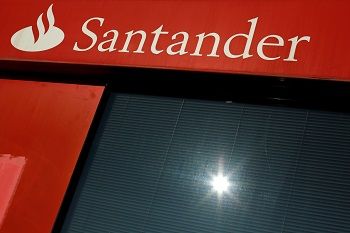Banco Santander entered the history books on Tuesday as it became the first bank to extend an Additional Tier 1 bond after months of speculation by declining to exercise the call option at the first opportunity. The decision will provide a significant test for the asset class.
The bank had publicly stated that Tuesday was the final day on which it could call the €1.5bn 6.25% perpetual AT1, a type of deeply subordinated bond that counts as regulatory capital.
That set Santander at odds with many in the market who reckoned the deadline fell earlier, but any confusion was finally put to bed after a call notice failed to emerge.
“When making call judgements, we have an obligation to assess the economics and balance the interests of all investors,” a Santander spokesperson said on Tuesday afternoon.
“We will continue to monitor the market closely and will seek to exercise call options where we believe it is right to do so.”
It is the first time that an AT1 has not been called since the genesis of the asset class in 2013. AT1s emerged following the financial crisis to shore up banks’ capital. The universe of such debt had grown to €159bn-equivalent by the end of January, according to CreditSights data.
Despite expectations in the past that banks would “do the right thing” and call their securities at the first opportunity, they are under no obligation to do so and banks must balance the interests of shareholders as well as fixed income investors when assessing the cost of capital.
Santander is no stranger to controversy and investors have not forgotten its aggressive liability management exercises in 2011 and 2012. It has come under fire in recent days for the lack of clarity around its actions.
“They’re totally within their rights [not to call], but similarly, I don’t know why they’ve been so secretive,” said a DCM banker prior to Tuesday’s statement.
THE CALL THAT NEVER CAME
Expectations that the bank would indeed extend its €1.5bn 6.25%, which is callable on a quarterly basis, grew as the cost of issuing AT1 debt rose over the past year. The issuer reiterated on its recent earnings call that it would replace its AT1 capital only if the economics made sense.
But the bank threw the market into confusion last week when it opened books on a new AT1 issue, implying that the 6.25% would indeed be called. A short settlement date of just two days on the new bonds – unusually short for an AT1 – reinforced that theory.
The €1.5bn 6.25% notes initially rallied by more than 1.5 points to just below par before losing those gains. They were bid back at 98.25 earlier on Tuesday afternoon.
The tightly priced new Reg S dollar perpetual non-call five transaction failed to find much support among investors, however, and the US$1.2bn print (€1.05bn-equivalent) fell considerably short of the €1.5bn of capital coming up for call.
Many market participants said the deal, which emerged during the Lunar New Year holidays when Asian investors are out of the office, looked rushed.
Joint bookrunners Credit Agricole, Credit Suisse, Deutsche Bank and HSBC were rumoured to be left long of paper following the transaction. Santander was also a bookrunner.
The new issue fell to a cash price of 98 after pricing at par, but had edged back up to 98.43 before Santander issued its statement on Tuesday afternoon.
The short settlement date on the new US$1.2bn 7.5% PNC5 ensured that the US$1.2bn transaction was entirely wrapped up before it became clear that the 6.25% bonds would not be called.
It is possible that a longer settlement date could have enabled investors to drop out of the trade once they learned that the 6.25% would be extended.
Santander’s decision not to call reinforced the view that the issuer’s plan all along was to refinance a US$1.5bn 6.375% security instead, which is first callable in May. Once again, however, this is pure conjecture.
